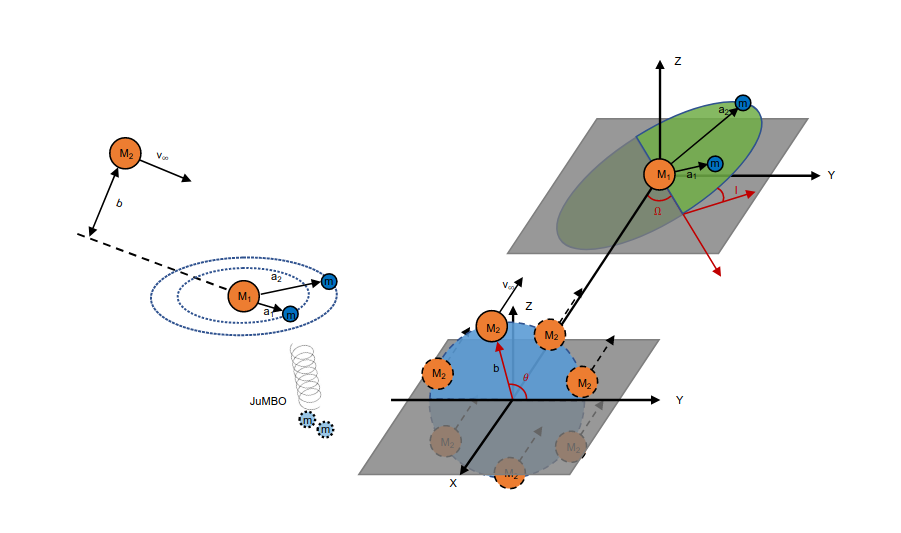Nature Astronomy: Free-floating Binary Planets from Ejections During Close Stellar
Encounters
Exoplanets -- planets beyond our solar system -- have been found in increasing amounts
over the years as our telescope techonology continues to improve. However, a number
of exoplanets about the same size of Jupiter have been found in pairs, floating together
through space with no host star to orbit around. These types of systems have been
dubbed JuMBOs, or Jupiter-Mass Binary Objects. Recently, Dr. Rosalba Perna and collaborators
have developed a theory to help explain the mysterious prevalence of the JuMBOs scattered
throughout the galaxy!
The key of this new theory lies in close fly-bys between two stars. One star is host to the two Jupiter-size exoplanets, and when the second star gets close enough, the two planets can be exected out of their original host star's influence. The two planets, orbiting a star with mass M1, are initially regular orbiting bodies. When a second, interloper star passes close enough to the original star, the two planets can be given enough kinetic energy to be ejected from their home system. Then, without the gravity of a star around which to orbit, these two planets begin to orbit around their own center of mass.

A sketch method through which JuMBOs are produced. On the left, we see the schematic
of the mechanism developed. Host star M1 has the two Jupiter-size exoplanets, marked by the blue dots. A fly-by of star M2 then causes these planets to be ejected out of the system together. The diagram on
the right shows the various variables needed to work out the theory's mathematical
details, such as the various orbit angles and the interloping star's velocity.
Dr. Perna and her collaborators were able to determine the relevant parameters needed to describe the formation of these JuMBOs, as well as the values these parameters need to be to predict when these binary systems will form. With N-body simulations, a common tool to investigate orbital properties for cosmic bodies, the scientists were able to conclude that these fly-by ejected JuMBOs occur relatively frequently in stellar clusters. These clusters have multiple stars that are gravitationally bound, and if any of those stars have planetary systems then the probability that the loosely-bound planets at the edge of these systems are ejected is quite significant. When two of these outer planets are at points in their orbits that are close together, they can then be ejected together, creating a JuMBO.
The published article may be found here, and the journal issue for which this article is the cover may be found here.

